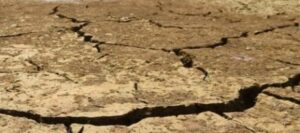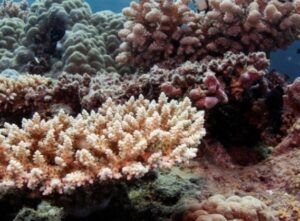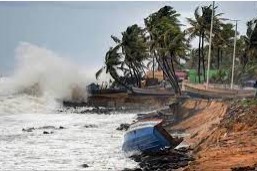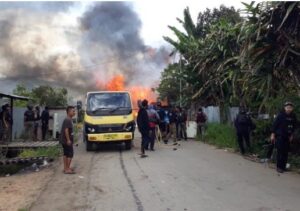
STRATEGIC ASSESSMENT. Shark fins, representing a market of about $500 million per year, can sell for about $1,000 a kilogram (2.2 pounds). According to the Pew Environment Group, between 63 million and 273 million sharks are killed every year, mainly for their fins and other parts.
With many shark species taking more than 10 years to reach sexual maturity, and having a low fertility rate, the constant hunting of the species has decimated their numbers.

The World Bank is deploying short- and long-term responses to boost food and nutrition security, reduce risks, and strengthen food systems. Global prices are forecast to remain at historically high levels through the end of 2024, and the war is altering patterns of trade and production in ways that will aggravate food insecurity and inflation. These jolts come after two years of Covid-19 pandemic disruption, creating a blow to an already fragile global food system grappling with climate extremes.

It estimated the average temperature for the year as a whole would be between 14.2 degrees Celsius and 14.6C degrees depending on December temperatures. That is a significant increase from the previous record of 14.07C seen in 2020, and the highest since records began in 1990.
Annual rainfall is expected to be as much as 25 percent lower than normal, with precipitation in July 85 percent below average. The driest year in France was 1989, which saw a 25 percent rainfall deficit.
Globally, if projections for the rest of 2022 hold, the United Nations says that each of the last eight years will be hotter than any year prior to 2015. Earth has warmed more than 1.1 degrees Celsius since the late 19th century, with roughly half of that increase occurring in the past 30 years, the World Meteorological Organization said in a report in November.

Greenhouse gases accounting for more than 95 percent of warming are all at record levels, the WMO’s annual State of the Global Climate found.
In the European Alps, glacier melt records have been shattered in 2022, with average thickness losses of between three and over four metres (between 9.8 and over 13 feet), the most ever recorded. Switzerland has lost more than a third of its glacier volume since 2001.

Australia’s recently elected Labor government has pledged to spend A$1.2 billion ($800 million) in coming years to protect the reef. The parliament in September passed a legislation for net zero emissions by 2050. Canberra has lobbied for years to keep the reef – which contributes A$6.4 billion ($4.3 billion) to the economy – off the endangered list as it could lead to losing the heritage status, taking some shine off its attraction for tourists.

Underwater heatwaves and cyclones – driven in part by runaway greenhouse gas emissions – have devastated some of the 3,000 coral reefs that make up the Great Barrier Reef. The Great Barrier Reef accounts for around 10 per cent of the world’s coral reef ecosystems. The network of more than 2,500 reefs covers 348,000 square kilometres.

The COP27 summit concluded with a landmark climate “loss and damage” fund, geared towards developing nations particularly vulnerable to the effects of climate change. The money will cover the cost of damage that these countries cannot avoid or adapt to. Nearly 200 countries, including from the EU and the US, have agreed to contribute.
By 2050, up to 216 million people could be displaced due to climate change. Neither migration nor relocation were addressed in the COP27 conference agreement drafts.
Deforestation in the Brazilian Amazon has fallen in the 12 months through July, new government data showed, as incoming President Luiz Inacio Lula da Silva seeks to restore protection for the vital rainforest.
National space agency (INPE) data released showed 11,568sq km (4,466sq miles) of forest cover was destroyed in the Brazilian Amazon from August 2021 to July 2022 – an area larger than Qatar.
That was an 11 percent drop from the same period a year earlier, when deforestation hit a 15 year high under far-right Brazilian President Jair Bolsonaro. average annual deforestation rose by 59.5 percent from the previous four years, and by 75.5 percent from the previous decade, according to INPE figures. The Indigenous Missionary Council recorded 305 cases of “invasions, illegal exploitation of resources and damage to property” on Indigenous territories last year that affected 226 Indigenous lands in 22 Brazilian states. That was up from 109 such incidents in 2018, the year before Bolsonaro took office – a 180 percent increase.
Carbon Brief, a UK-based climate website, said in a report in September that a Lula election victory could see deforestation drop by 89 percent in the Brazilian Amazon over the next decade and would prevent the destruction of 75,960sq km (29,328sq miles) of rainforest by 2030.

In Yemen, one-third of the population — 19 million people — was not able to find sufficient food in 2022, up from 15 million last year. Those include 161,000 living in famine-like conditions, according to the UN food agency. Children and women are the most affected, with 1.3 million pregnant and breastfeeding women and 2.2 million children under five years acutely malnourished. Of those, 538,000 children suffer from severe acute malnutrition, said the UN Office for the Coordination of Humanitarian Affairs. According to the UN agriculture agency, this year’s rainfall was 45 percent higher compared with 2021.
At least 72 people were killed in flooding this year, and some 74,000 families in 19 of the country’s 22 provinces were affected, with those living in displacement camps bearing the brunt of the deluge. There are 4.3 million people displaced, most made homeless by the raging conflict, according to UN figures.

Somalia needs $55.5bn in investment and assistance in the next 10 years to be able to recover from climatic shocks. n Nigeria, seasonal rainfall and flooding killed more than 55 people in extreme weather scientists say was made 80 times more likely because of climate change. About 20 million people in the country are estimated to face acute food insecurity amid crop losses and lower yields. The Red Cross has warned about an outbreak of cholera and other waterborne diseases during a dire shortage of life-saving aid, including shelter, water, sanitation, food, and emergency healthcare. The country’s northeastern regions, where years-long fighting against an insurgency is centred, were the worst hit.

More than 1,700 environmental and land defenders have been killed in the last decade. Most of them were Indigenous people — and most were in Latin America. At least 613 Indigenous activists have been murdered over the last decade, according to data published by environmental and human rights watchdog Global Witness.
Between 2012 and 2021, rights groups and organizations documented the deaths of more than 1,700 environmental and land defenders in about 60 countries. More than 35% of those killed identified as Indigenous.
But the true death toll is likely higher. Some 5% of cases documented by Global Witness didn’t specify details such as ethnicity.
The lack of a free press, independent monitoring and a robust civil society can also lead to underreporting. Some countries have a longer tradition of documenting such attacks and have established stronger networks across their territories, which means better monitoring.
Over the last three years, the reported rate at which Indigenous activists were killed was even higher than over previous years. Though they make up just 5% of the world’s population, Indigenous people were victims of more than 41% of the fatal attacks documented against environmental defenders in 2021. Mexico, Colombia, Nicaragua, Peru and the Philippines were the most lethal countries. Also in the Phillipines, killings soared between 2012 and 2021. Of the 270 environmental leaders killed in the southeast Asian country, 114 were Indigenous.







